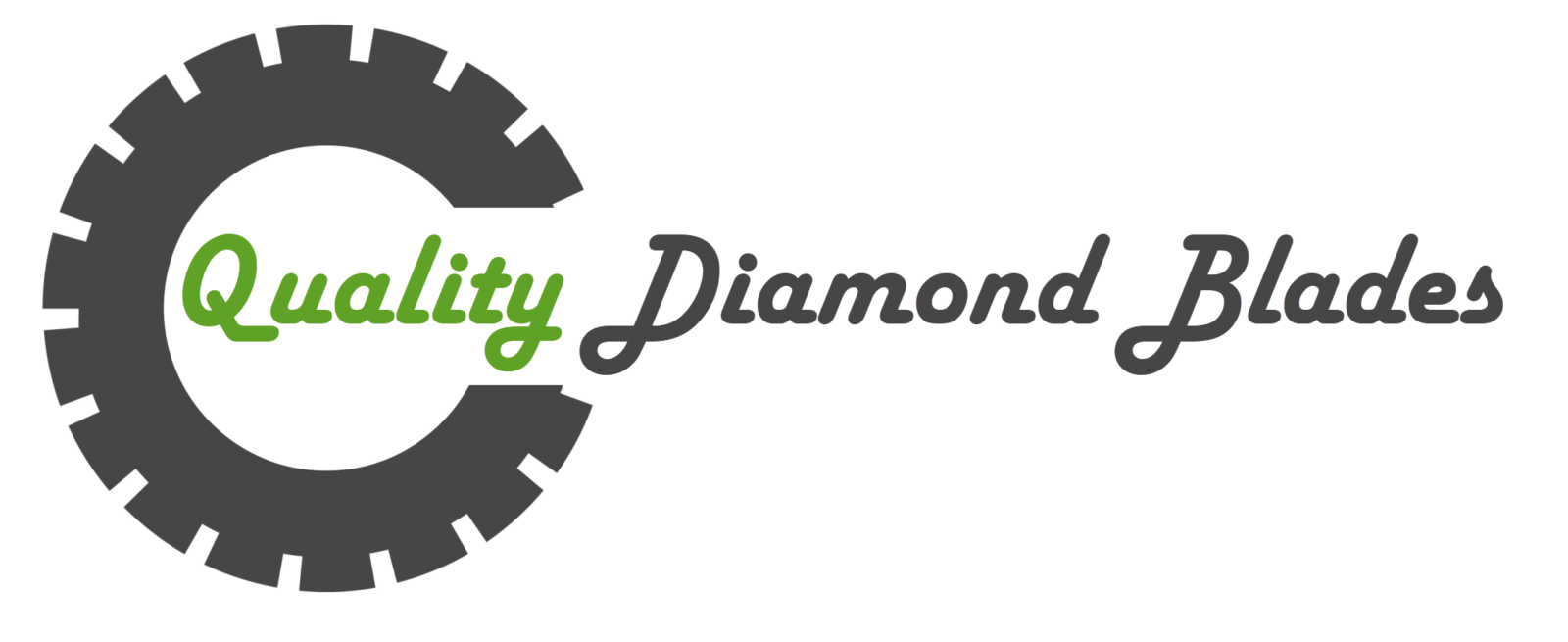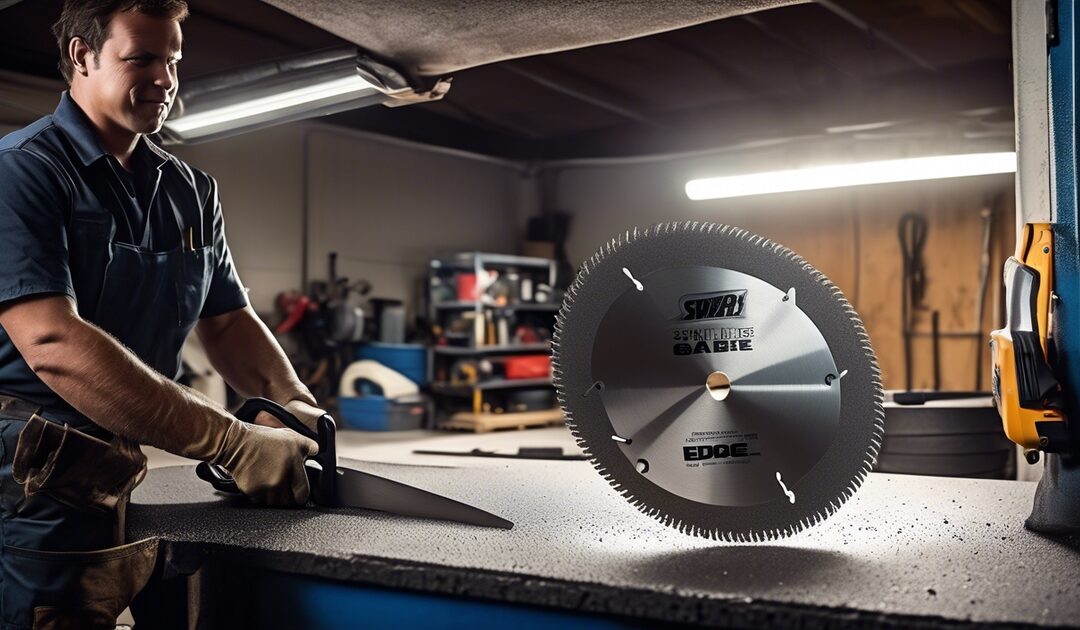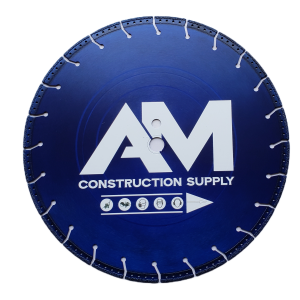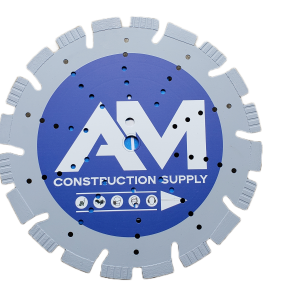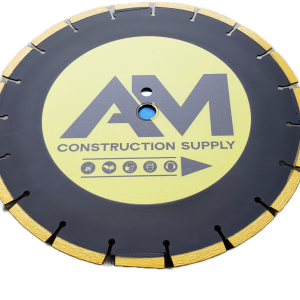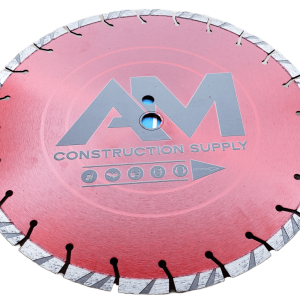The evolution of cutting tools has been pivotal in shaping the construction industry, leading to more efficient, precise, and safer methods. Among these innovations, the 24 in asphalt saw blade stands out as a game-changer for professionals tackling roadwork, paving projects, and other heavy-duty tasks. Its design and materials cater specifically to cutting through tough surfaces like asphalt with minimal wear and tear, reflecting a significant leap from traditional blades. This post delves into the specifics of this blade, highlighting its benefits and why it’s become an indispensable tool in the arsenal of construction teams worldwide. From durability to precision cutting, we’ll explore how the 24 in asphalt saw blade is setting new standards in the field.
Key Takeaways
- Understanding the basics of asphalt cutting is crucial for selecting the right 24 in. diamond blade, ensuring efficient and clean cuts.
- The material of the blade, typically diamond segments, plays a significant role in the blade’s performance and durability, making it suitable for cutting through tough asphalt.
- Before purchasing a 24 in. asphalt saw blade, ensure it is compatible with your cutting equipment to avoid operational issues and maximize safety.
- Following a comprehensive buying guide can help you choose a blade that meets your specific needs, whether for professional or personal projects.
- Regular maintenance and proper care of the blade can significantly extend its lifespan, providing better value for your investment.
- Adhering to recommended safety precautions and cutting techniques not only ensures your well-being but also enhances the efficiency and effectiveness of your cutting tasks.
Asphalt Cutting Basics
Importance
24-inch asphalt saw blades play a crucial role in road construction and maintenance. They are designed for efficiency and precision, making them indispensable tools. These blades cut through asphalt quickly, saving time on projects.
The use of these blades leads to significant cost savings. They allow workers to complete tasks faster, reducing labor costs. Their precision also minimizes material waste, further cutting down expenses.
Challenges
However, using 24-inch asphalt saw blades comes with challenges. The abrasive nature of asphalt materials causes wear and tear on the blades. This can diminish their effectiveness over time.
Maintaining optimal cutting speed and performance is tricky. It requires regular adjustments based on the blade’s condition and the asphalt’s hardness.
Choosing the right blade for specific tasks is another difficulty. The market offers various options, each suited for different types of asphalt cutting. Making the wrong choice can lead to inefficient cuts and increased project costs.
Equipment Overview
These saw blades are compatible with a range of saws, up to 40hp. This compatibility ensures that they can be used in various projects, from small repairs to large-scale road constructions.
The size of the blade is vital for its efficiency and compatibility with different equipment. A 24-inch blade offers a balance between cutting depth and maneuverability, making it suitable for most asphalt cutting tasks.
Projects ideal for these blades include:
- Road repairs
- Laying utility lines beneath roads
- Creating expansion joints in pavements
24 in. Diamond Blade Overview
Features
The diamond composition of the 24 in. asphalt saw blade stands out for its cutting performance. It contains high-grade diamonds embedded in the segment. This ensures a sharper and more efficient cut.
The segment design is specifically tailored for asphalt cutting. It maximizes contact with the surface, leading to smoother cuts. Cooling holes are present in the blade. They play a crucial role in reducing heat buildup during intense cutting sessions.
Benefits
One of the primary benefits of Super Professional Blades is their longevity and durability. These blades can deliver up to 3,500 lineal feet of cutting before needing replacement.
Their cost-effectiveness over time is notable as well. The initial investment pays off through extended use and fewer replacements needed. Moreover, these blades save significant time due to their high cutting efficiency, making them a favorite among professionals.
Durability
The quality of materials used in these blades directly contributes to their extended life span. They withstand regular wear and tear from cutting through abrasive asphalt materials without losing their edge.
The company prioritizes durability in its design philosophy. This focus ensures that each blade remains reliable over many uses, providing consistent performance that professionals can depend on.
Cutting Speed
Optimized cutting speed is another hallmark of the 24 in. diamond blade, facilitating efficient asphalt removal. Faster cuts mean shorter project timelines and reduced labor costs, significantly impacting overall project efficiency.
It’s important to match the blade with a saw that has an appropriate horsepower rating for optimal speed and performance. This alignment ensures that neither component is overtaxed during operation, maintaining efficiency and extending equipment life.
Blade Material Insights
Diamond Composition
High-grade diamonds are essential for cutting through asphalt effectively. These blades often utilize synthetic diamonds due to their consistency and cutting prowess. The grade of diamond used significantly impacts the blade’s performance. Premium grades ensure sharpness and durability, but they also raise the cost.
The size and concentration of diamonds within the blade matter too. Larger diamonds can cut faster but might not last as long, while smaller ones offer a smoother cut over a longer period. A higher concentration of diamonds means a longer-lasting blade but at a higher price point. Manufacturers aim for a balance that offers both efficiency and value.
Bond Types
Asphalt cutting requires bonds that are hard yet wear-resistant. The bond is the material that holds the diamond particles in place on the blade edge. Its hardness is tailored specifically for the abrasiveness of asphalt to prevent premature wear.
The type of bond directly influences how long a blade will last and how efficiently it cuts. Soft bonds tend to wear down quickly on abrasive surfaces like asphalt, so harder bonds are preferred. However, selecting the right bond type also depends on the specific composition of the asphalt being cut. Contractors often consult experts to choose a bond that matches their project needs.
Segment Design
For smooth and efficient cutting, blades designed for asphalt have unique segment shapes. These shapes help in removing debris from the cut and cooling the blade more effectively, preventing overheating.
Segment design plays a crucial role in how well a blade performs. For instance, taller segments allow for deeper cuts and extend the life of the blade by enabling more use before wearing down. This design aspect is critical for professionals who rely on their tools’ longevity and effectiveness.
Compatibility Considerations
Saw Types
A 24-inch asphalt saw blade fits a wide range of saws, specifically those up to 40hp. This includes both walk-behind and handheld saws, making it a versatile choice for various projects.
For large-scale tasks, walk-behind saws offer the power and stability needed for deep, precise cuts. They are ideal for cutting through thick layers of asphalt with ease. Handheld saws, on the other hand, provide flexibility and are perfect for smaller jobs or areas that are hard to reach.
The compatibility with different types of saws ensures that regardless of the project scale, there’s a suitable tool that can be paired with these durable blades.
Arbor Sizes
The arbor size is crucial for secure blade installation. A mismatch can lead to dangerous situations or damage to the equipment. The 24-inch asphalt saw blades come in various arbor sizes to fit different machines perfectly.
Ensuring the correct arbor size not only guarantees safety during operation but also enhances performance. It allows the blade to spin at optimal speed without wobble or slippage, providing clean and efficient cuts every time.
Operational Speeds
Operational speeds vary depending on the type of asphalt you’re cutting. For softer materials, higher speeds allow for smoother cuts with less wear on the blade. However, harder surfaces require slower speeds to reduce blade damage and ensure precision.
Adjusting operational speed based on project requirements is vital for maintaining cutting efficiency and extending the life of your blade. It’s important to consult the manufacturer’s guidelines to find the optimal speed settings for your specific task.
Buying Guide
Quality Indicators
When selecting a 24-inch asphalt saw blade, quality should never be compromised. High-quality blades often feature a higher diamond concentration, which directly influences their cutting ability and longevity. This is a crucial aspect because it determines how efficiently the blade cuts through asphalt without quick wear.
Manufacturers that focus on precision and detail in their blade construction tend to produce more reliable and efficient products. These details might include the method of diamond embedding and the quality of the metal used. Blades crafted with meticulous attention to detail can withstand harsh conditions and deliver consistent performance.
Customer testimonials serve as real-world proof of a blade’s quality. Positive feedback about durability, cutting speed, and overall satisfaction are strong indicators of a high-quality product. They offer valuable insights beyond technical specifications, highlighting reliability in various project conditions.
Size Selection
The choice of blade size is influenced by several factors, including the power of the saw being used and the scale of the project at hand. A 24-inch asphalt saw blade is ideal for larger projects requiring deeper cuts. Its size allows for efficient operation over extensive areas, making it a preferred option for major construction or road repair tasks.
Different sizes cater to varied applications, ensuring there’s an appropriate tool for every job. Smaller blades might suit shallow cuts or smaller projects, while larger ones like the 24-inch are designed for depth and efficiency in bigger operations.
Price vs. Performance
Comparing Super Professional Blades with other options on the market reveals significant differences in cost-effectiveness. While these premium blades may come with a higher upfront cost—ranging from $145.00 to $4,000.00—they offer substantial long-term savings due to their durability and cutting efficiency.
Investing in a high-quality blade like those from Super Professional ensures fewer replacements over time and reduces downtime caused by blade changes or maintenance. The initial investment pays off through consistent performance and extended lifespan, making these blades more economical over their usage period.
Maximizing Blade Lifespan
Proper Installation
To ensure your 24 in asphalt saw blade serves you well, proper installation is crucial. First, make sure the blade is securely attached to the saw. This involves checking that all components are tightly fitted and there’s no room for wobble or misalignment.
It’s essential to verify the compatibility between the blade and saw. Using a blade not designed for your specific saw model can lead to poor performance or even damage. Lastly, remember that correct installation is not just about performance; it’s also about safety. An improperly installed blade poses significant risks to the operator.
Maintenance Tips
Regular maintenance is key to extending the lifespan of your asphalt saw blade. Make it a habit to inspect the blade for wear and damage before and after each use. Look out for signs of dulling or chipping that could impair its cutting efficiency.
Cleaning plays a vital role in maintaining your blade’s condition. After use, clean off any asphalt residue to prevent buildup that can hamper performance. A simple solution of water and mild detergent usually does the trick without damaging the blade.
Proper storage also contributes significantly to a blade’s longevity. Ensure your blades are stored in a dry, cool place to prevent corrosion and wear from environmental factors.
Storage Practices
Speaking of storage, optimal conditions can greatly extend your blade’s service life. A dry, cool environment prevents rust and corrosion, keeping the metal in prime condition for longer periods.
Hanging blades vertically is recommended to avoid warping and other forms of damage that can occur when they’re laid flat under weight. This position ensures they retain their shape and cutting capability.
Using protective covers on your blades can safeguard their edges against knocks and scrapes when not in use. These covers help maintain sharpness and readiness for the next job.
Safety Precautions
Personal Protective Equipment
Using a 24-inch asphalt saw blade requires strict adherence to safety protocols, particularly in choosing the right personal protective equipment (PPE). Essential PPE includes:
- Eye protection to shield against flying debris.
- Gloves for a firm grip and protection from cuts.
- Hearing protection to mitigate the risk of long-term hearing loss.
These items are crucial in preventing injuries during blade operation. Moreover, appropriate footwear plays a significant role. It ensures operator safety by providing stability and slip resistance, which is especially important on uneven surfaces or when maneuvering heavy equipment.
Operational Safety
The cornerstone of operating a 24-inch asphalt saw blade safely lies in following the manufacturer’s guidelines. Ignoring these can lead to improper handling and accidents. Comprehensive training is indispensable for all operators. It familiarizes them with the equipment and educates them about potential risks.
Regular equipment checks are another pillar of operational safety. They help maintain high safety standards and ensure that the machinery functions as intended. This proactive approach not only extends the lifespan of your saw blade—as discussed in the previous section—but also minimizes the risk of unexpected failures that could jeopardize user safety.
Emergency Procedures
Despite all precautions, emergencies like blade breakage or equipment malfunction can occur. In such events, knowing the immediate steps to take is vital:
- Turn off the machine immediately to prevent further damage.
- Evacuate the area if necessary to ensure everyone’s safety.
Having a first aid kit and emergency contacts readily available is also crucial. These resources enable a quick response, which can significantly minimize injury and damage. The role of quick action cannot be overstated; it often makes the difference between a minor incident and a serious accident.
Cutting Techniques
Starting Cuts
Making the first cut in asphalt with a 24-inch saw blade requires precision. Marking cut lines before starting ensures accuracy. Use chalk or a similar marking tool for visibility. It’s crucial to start at a slow speed. This helps establish a clear path for the blade and reduces the risk of deviation. A steady hand and a focused eye help make initial cuts smoothly.
Depth control is not just about the cut’s appearance; it’s vital for blade longevity and safety. Adjust the saw to your desired depth before beginning. This prevents overworking the blade and ensures consistent quality across the cut. Remember, deeper cuts require more power and can wear down the blade faster.
Straight Cuts
For long straight cuts, keeping your line true is essential. Using guide marks or laying down a straight edge can help maintain accuracy. A steady operation of the saw ensures that your cuts remain clean and precise. The key here is consistency; avoid sudden movements that could veer the blade off course.
Curved Cuts
Curved cuts in asphalt present unique challenges. They demand not only consistency in depth but also in speed around bends. For intricate curves, consider using smaller blades or specialized equipment designed for such tasks. These tools offer greater flexibility and control, making smooth curved lines achievable.
Maintenance and Care
Cleaning Process
After slicing through asphalt, a 24-inch asphalt saw blade accumulates debris and particles. To maintain its cutting efficiency, removing these materials is crucial. A simple yet effective method is using a stiff brush or air compressor to blow away the loose debris. For more stubborn asphalt stuck on the blade, applying a specialized cleaning solution designed for saw blades can work wonders. Letting the blade soak for a few minutes before scrubbing can make the cleaning process easier.
The importance of keeping the blade clean cannot be overstated. It directly impacts the cutting performance and longevity of the saw blade. Regular cleaning prevents build-up that can dull the blade prematurely.
Inspection Routine
Setting up a regular inspection routine for your 24-inch asphalt saw blade ensures it remains in top condition. Experts recommend inspecting the blade after every use or at least once a week during heavy usage periods. Key points of inspection include checking for segment wear and ensuring the blade’s flatness is intact. Uneven wear or warping compromises cutting precision and can be dangerous.
Early identification of wear or damage allows for timely decisions on whether to repair or replace the blade, thus avoiding potential safety hazards. Ensuring your equipment is in good working order is not just about maintenance; it’s also about safety.
Repair Tips
Minor repairs like sharpening or rebalancing can significantly extend a saw blade’s service life. However, knowing when to repair versus replace is essential for cost efficiency. Blades that are too worn down may not be worth repairing due to safety concerns and diminished performance.
For those who prefer professional handling, many companies offer repair services for complex issues beyond DIY capabilities. These professionals can assess if your saw blade requires minor adjustments or complete replacement.
Final Remarks
Choosing the right 24 in. asphalt saw blade is crucial for your cutting projects. We’ve covered everything from the basics of asphalt cutting, understanding diamond blades, to maintenance and safety. Your takeaway should be a comprehensive guide that ensures you select a blade that not only fits your needs but also maximizes efficiency and safety. Remember, the right blade material and proper care extend your blade’s lifespan, saving you time and money in the long run.
Now it’s your turn to put this knowledge into action. Whether you’re gearing up for a big project or fine-tuning your toolkit, selecting the ideal asphalt saw blade is a step towards achieving flawless results. Don’t hesitate to revisit our buying guide and maintenance tips as you make your choice. Ready to cut through your next challenge? Start with confidence and the right tools in hand.
Frequently Asked Questions
What is the best use for a 24 in. asphalt saw blade?
A 24 in. asphalt saw blade is ideal for cutting through asphalt surfaces efficiently, providing clean, precise cuts for road repair and construction projects.
Can I use a 24 in. diamond blade on materials other than asphalt?
Yes, while optimized for asphalt, ensure compatibility with your material by checking the blade’s specifications under “Compatibility Considerations” to prevent damage or inefficient cutting.
What should I look for when buying a 24 in. asphalt saw blade?
Focus on diamond concentration and bond hardness from the “Buying Guide” section to ensure your blade matches the toughness of your project’s asphalt and has a long lifespan.
How can I maximize the lifespan of my 24 in. asphalt saw blade?
Regular maintenance as outlined under “Maintenance and Care,” using correct cutting techniques, and avoiding overheating are key to maximizing your blade’s lifespan.
What safety precautions should I take when using an asphalt saw blade?
Always wear appropriate personal protective equipment (PPE), ensure the saw’s safety features are engaged, and follow guidelines detailed in “Safety Precautions” to minimize risk during operation.
Are there specific cutting techniques for using a 24 in. asphalt saw blade?
Yes, employing proper cutting techniques such as gradual entry into the material and maintaining steady speed can enhance precision and reduce wear, as discussed in “Cutting Techniques.”
How do I maintain my 24 in. asphalt saw blade?
Follow regular maintenance practices including cleaning after use, inspecting for wear or damage, and storing properly as recommended in “Maintenance and Care” to ensure longevity and readiness for future projects.
